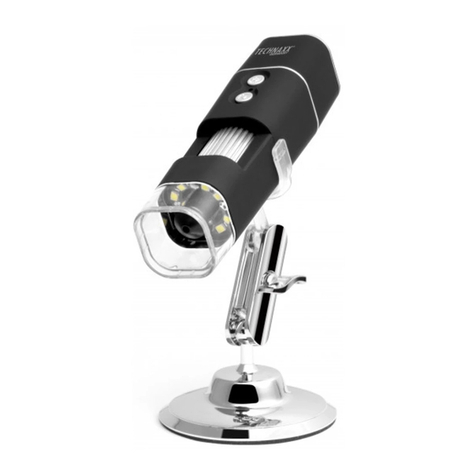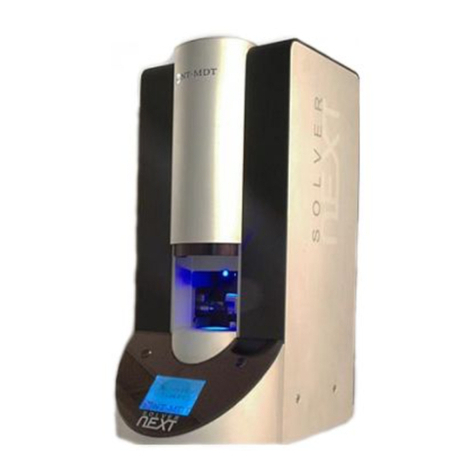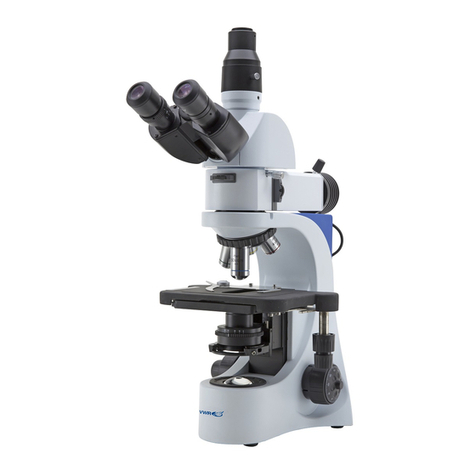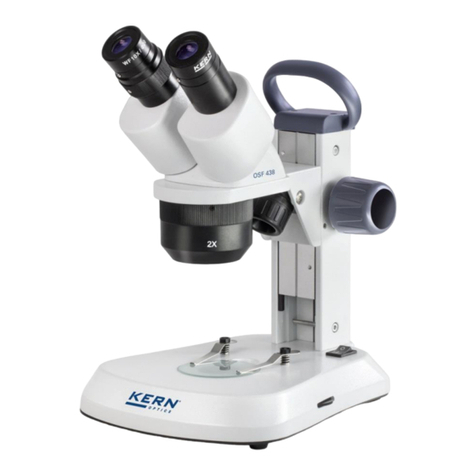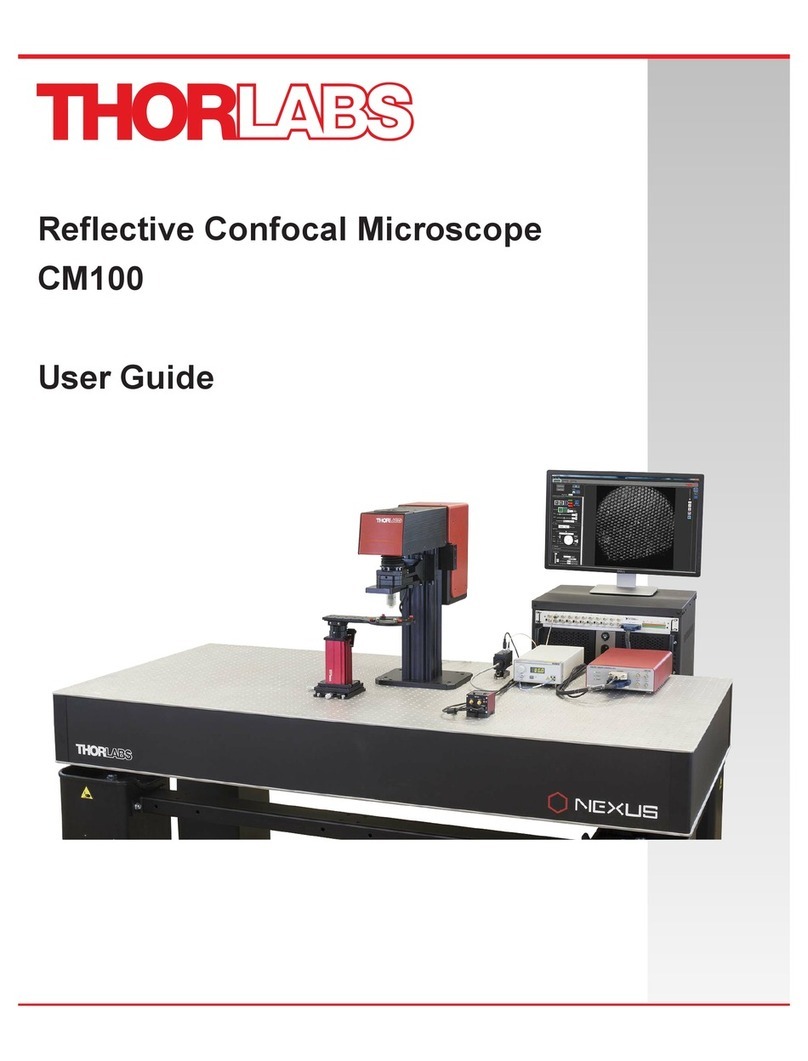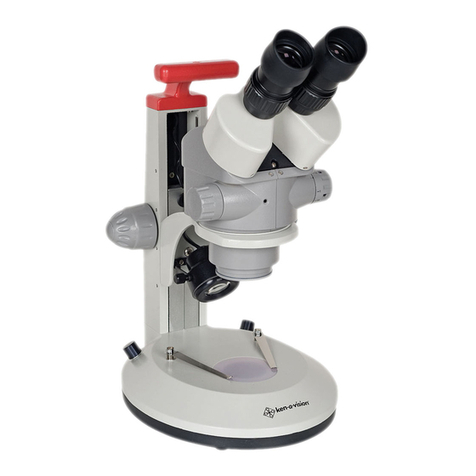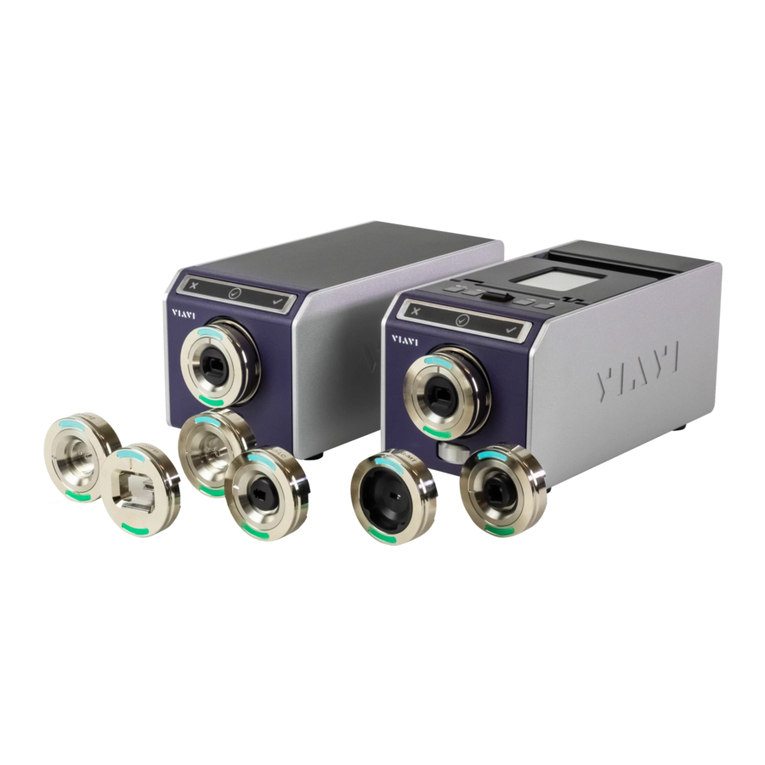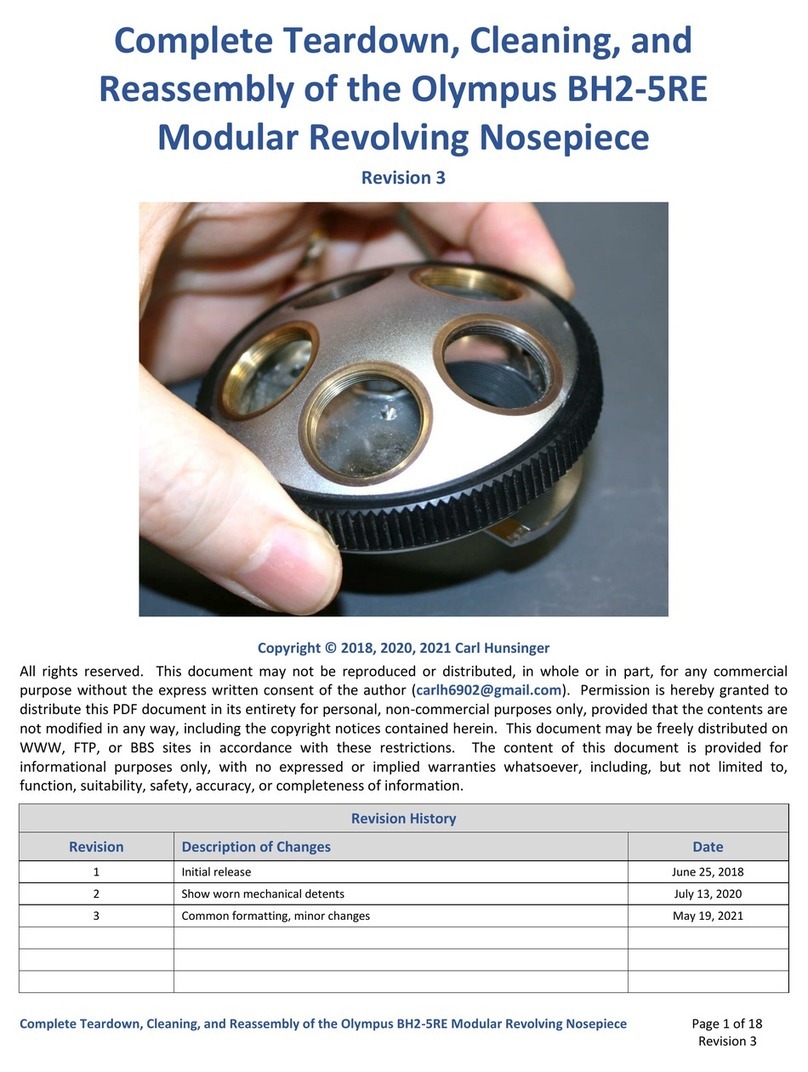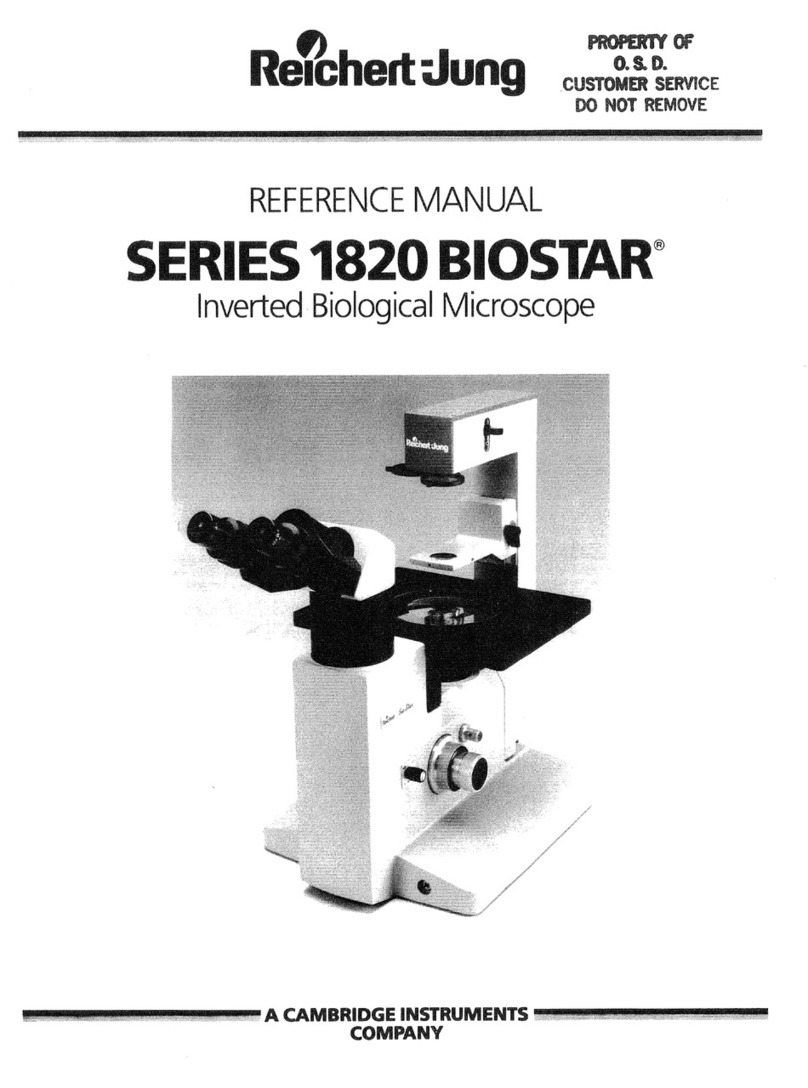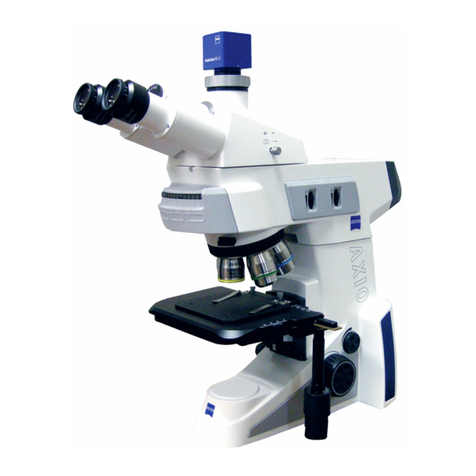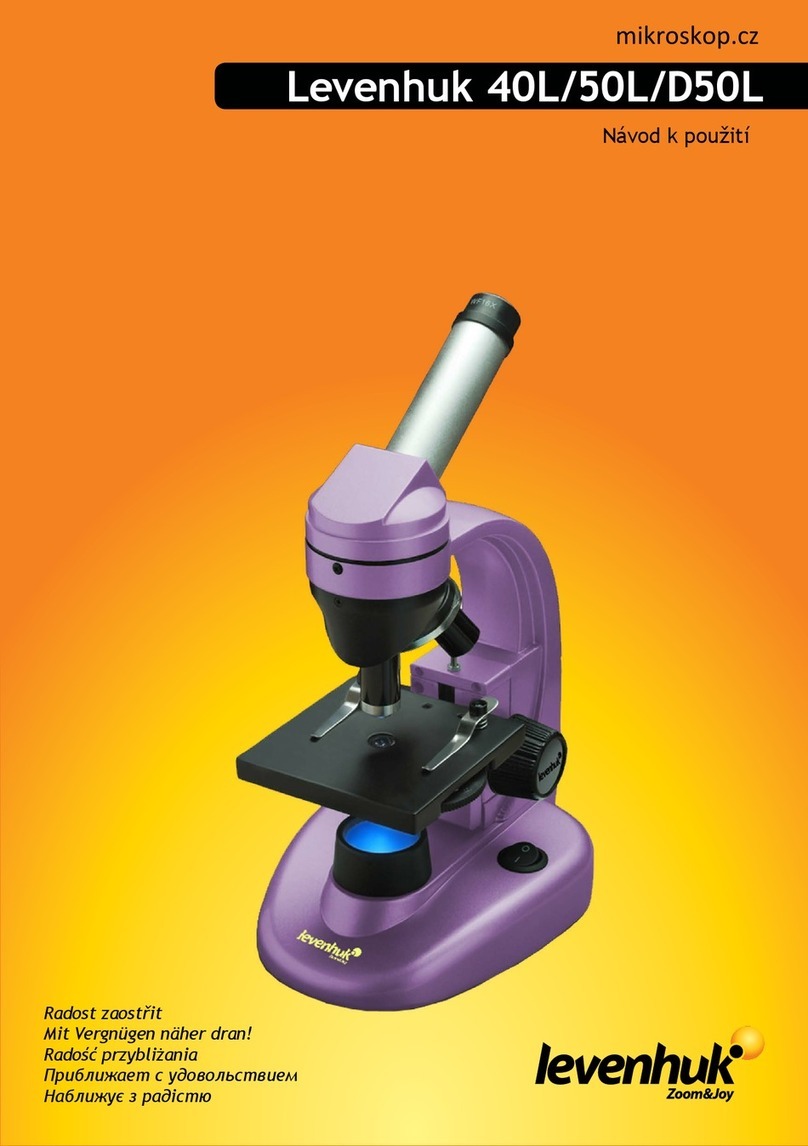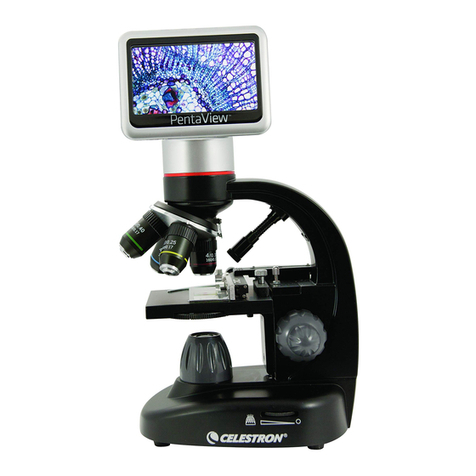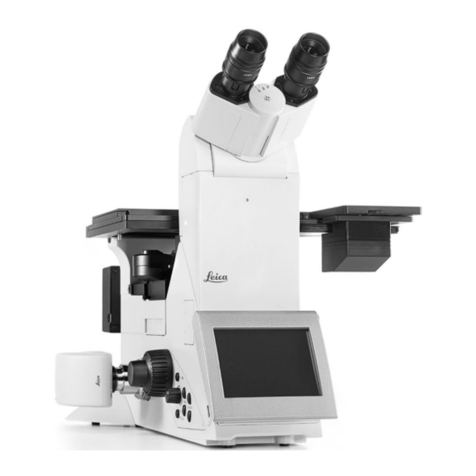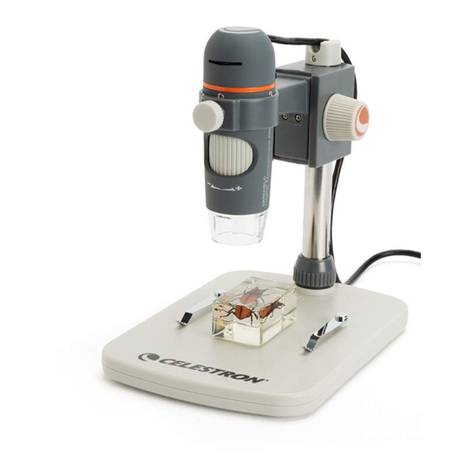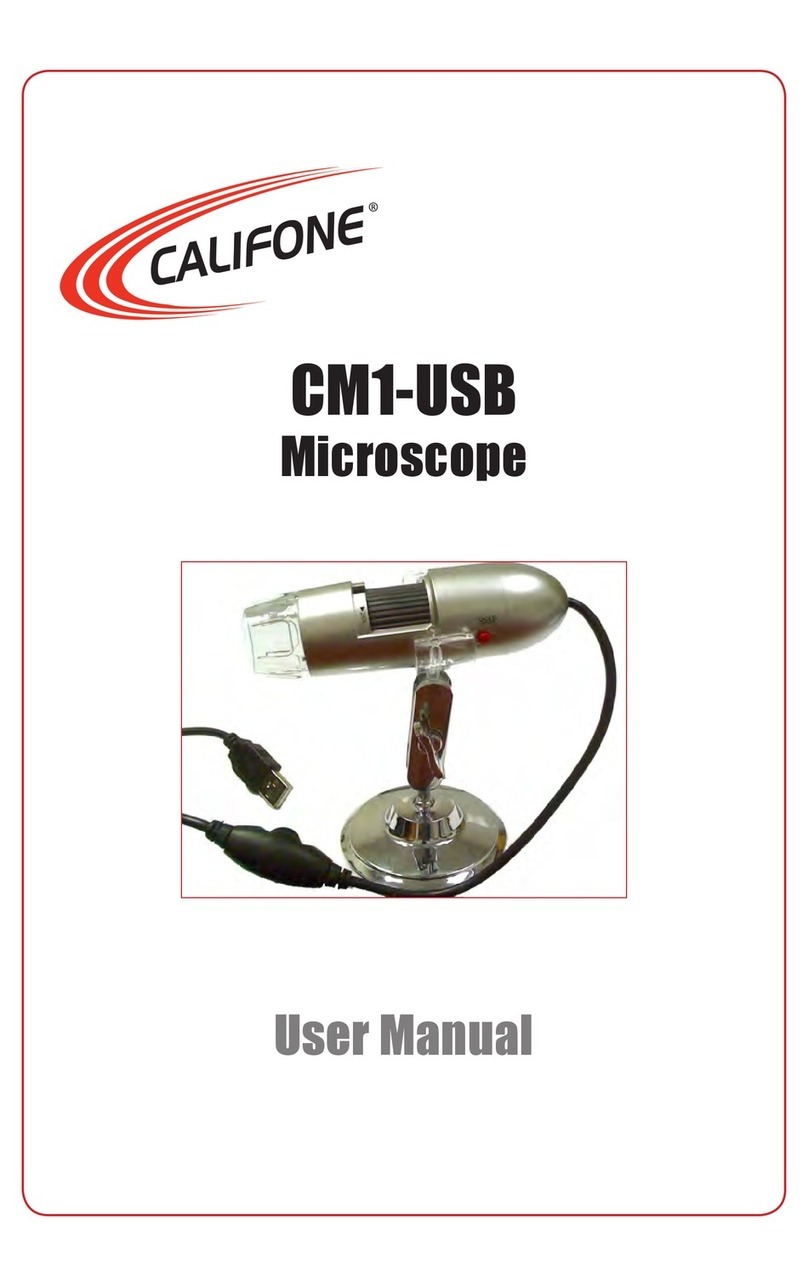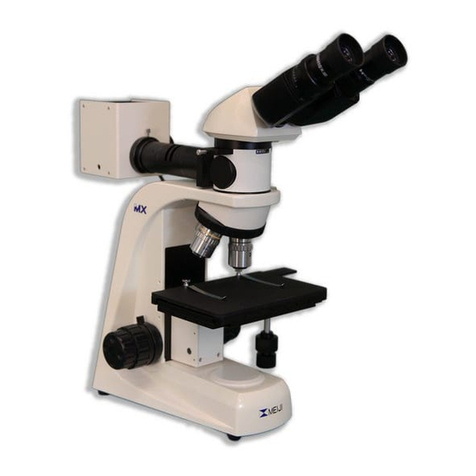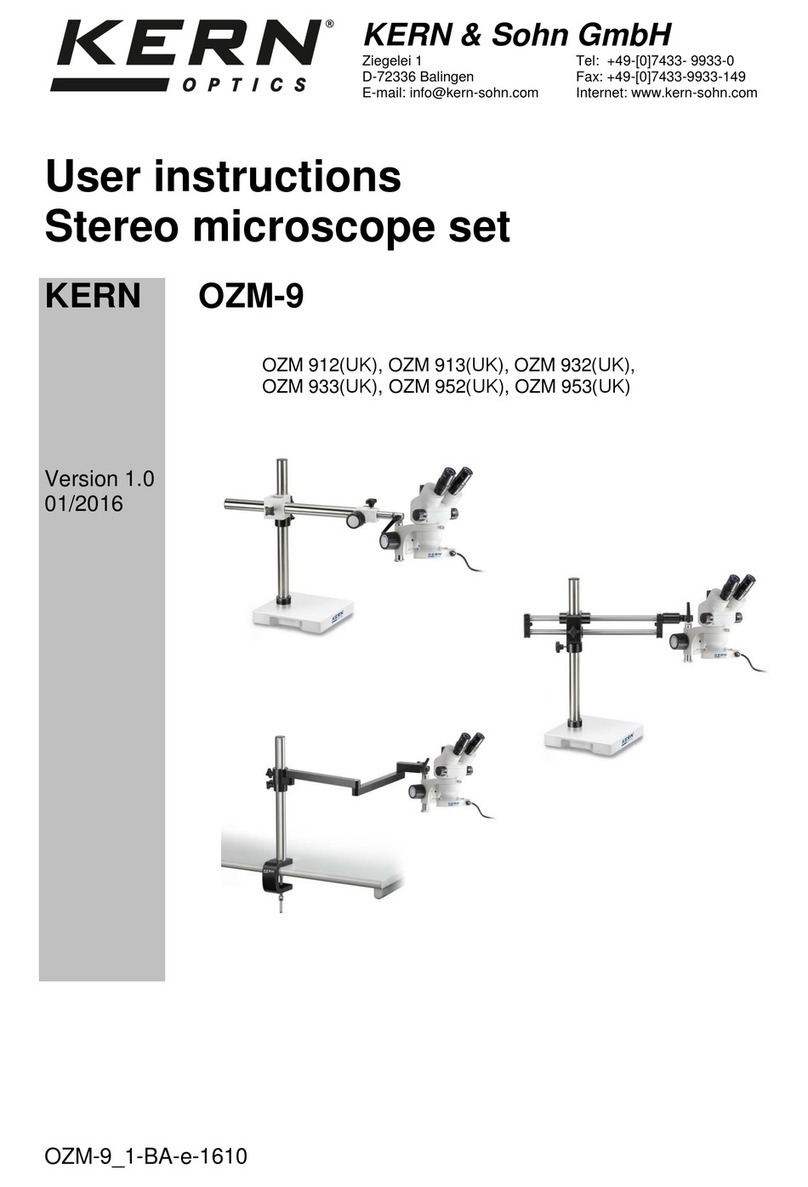Discovery Telecom 900x User manual

8+
AGES
900x Magnification Microscope with Carry Case
!WARNING:
CHOKING HAZARD:
– Small parts.
Not for children under 3 years.
900x Biological Microscope
900x Biological Microscope
Instruction Manual
x 2
NOT INCLUDED

900x Microscope
*Warning!
Not suitable for children under 3 years of age.
Contains functional sharp points.
12
11
11
16
18
21
14
19
13
15
17
202223
1200x
1
10
2
6
9
5
3
4
8
7
Introduction
Congratulations! You’ve chosen one of the highest quality microscopes
available for young explorers. Read the following instructions carefully to
get the greatest benefit from your precision instrument. Then try out the
experiments to begin your investigation of the fascinating world around you.
Microscope Parts
1Eyepiece
2Focus Knob
3Stage
4Metal Stage Clips
5Color Filter Wheel
6Objective
7Objective Turret (5x, 20x, 45x)
8Illumination On/Off Switch and Mirror
9 Rubber Base and Battery Case
10 Microscope Arm
Additional Contents:
11 (5) Prepared Slides and (7) Blank Slides
12 (7) Slide Covers/Labels
13 (7) Cover Slips
14 (2) Collection Vials
15 Petri Dish
16* Tweezers/Needle/Stirring Rod/Scalpel
17 Graduated Cylinder
18 Shrimp Hatchery
19 Specimen Slicer
20 Sea Salt Vial
21 Shrimp Eggs Vial
22 Red Dye Vial
23 Blue Dye Vial

How do I use my microscope?
Before you use your microscope, make sure that the table, desk, or surface
that you place it on is stable and is not subject to vibration. If the microscope
needs to be moved, hold it by the arm and base while carefully transferring
it. Once the microscope is in a suitable location and the batteries are
installed, check the light source to make sure that it illuminates. Use a
microfiber cleaning cloth to gently wipe the lenses off. If the stage is dirty
with dust or oil, carefully clean it off. Make sure that you only raise and lower
the stage using the focus adjustment knob.
How do I operate the illumination?
Locate the mirror/light on the base of the microscope. Flip the mirror/light
to the “on” position (with the light facing up) and the light will illuminate.
This microscope is equipped with an incandescent light that illuminates the
specimen from below. The color filter wheel is located in the middle of the
microscope stage. The filters help you when you are observing very bright
or clear specimens. Using these filters, you can choose various brightness
levels and colors. This helps you better recognize the components of
colorless or transparent objects (e.g. sea salt).
How do I adjust my microscope correctly?
Place the microscope in a suitable location as described above, and sit in a
comfortable viewing position. Always start each observation with the lowest
magnification. Adjust the distance of the microscope stage so that the
stage is in the lowest position, farthest away from the turret head. Turn the
objective turret until it clicks into place at the lowest magnification (Objective
5x/100x). Note: Before you change the objective setting, always make sure
the microscope stage is farthest away from turret by rotating the focus knob.
Separating the stage and turret by rotating the focus knob will avoid causing
damage to the specimen slide or microscope. When starting an observation,
always start with the 5x/100x objective in the rotating head.
How do I observe the specimen?
Sitting in your location with
adequate illumination chosen from
the color filter wheel, the following
basic rules should be observed:
Start with a simple observation
at the lowest magnification.
Position the object or specimen
in the middle of the stage under
the stage clips, centered over the
lower light. Focus the image by
rotating the focus knob until a
clear image appears
in the eyepiece.
Place the prepared slide directly under the objective on the microscope stage,
and secure it with the stage clips. The prepared slide should be located directly
over the lower illumination. Look through the eyepiece, and carefully turn the
focus knob until the image appears clear and sharp. Now you can select a
higher magnification by rotating to the 20x/400x objective turret. Higher levels of
magnification can be achieved by turning the objective turret to a higher setting
(45x/900x). Following this procedure creates a steady increase of magnification
without overpowering the view of the object. The following magnifications should
be considered: 100x, 400x, then 900x. Each time the magnification changes (due
to the objective change), the image sharpness must be readjusted with the focus
knob. When doing this, be careful because if you move the microscope stage too
quickly, the objective and the slide could come into contact and cause damage to
the slide or microscope.
For transparent objects (e.g. sea salt), light is projected by the lower light
traveling from below the stage, through the objective and eyepiece, and finally
into your eye. This process of light transmission is known as microscopy. Many
micro-organisms found in water, plant components, and the smallest animal
parts are transparent in nature. Opaque specimens, on the other hand, will need
to be prepared for viewing. Opaque specimens can be made transparent by a
process of treatment and penetration with the correct materials (media), or by
slicing. You can read more about creating specimens in the following Microscope
Experiments booklet.
Did you know?
The highest magnification is
not always the best for every
specimen!
Magnification Guide
Eyepiece Objective Power
100x
400x
900x
5x
20x
45x
20x
20x
20x
No recognizable image
No image
No light
Turn on light
Readjust focus
Start with the
lowest power objective (5x)
Center object on slide under
lowest power objective (5x)
Replace batteries
Check on/o position
Troubleshooting Table
Problem Solution

CLEANING TIPS
To ensure your microscope has a long service life, clean the lens (objective and
eyepiece) with only a soft, lint-free cloth, like a microfiber cloth. Do not press
down too hard while cleaning, as this might scratch the lens. Ask your parents
to help if your microscope is really dirty. The cleaning cloth should be moistened
with cleaning fluid and the lens wiped clean using very little pressure. Make sure
your microscope is always protected against dust and dirt. After use, leave it in a
warm room to dry off.
WARNINGS AND SAFETY
Read and follow the instructions, safety rules, and first aid information.
This microscope set is intended for children older than age 8. Children should
only use this device under adult supervision. Never leave a child unsupervised
with this device. Accessories in this experimental kit may have sharp edges and
tips. Please store the device and all of its accessories and aids out of the reach
of young children when not being used due to a risk of injury.
This device contains electronic components that are powered by batteries.
Batteries should be kept out of children’s reach. When inserting batteries, please
ensure the polarity is correct. Insert the batteries according to the displayed
+/- information.
DANGER OF FIRES AND EXPLOSIONS!
Do not expose the device to high temperatures. Use only battery types
recommended. Never mix old and new batteries. Replace all batteries at the
same time. Never mix alkaline, standard carbon-zinc, and rechargeable nickel-
cadmium batteries. Never short circuit the device or batteries or throw either
into a fire. Exposure to high temperatures or misuse of the device can lead to
short circuits, fires, or even explosions. Leaking or damaged batteries can cause
injury if they come into contact with the skin. If you need to handle such batteries,
please wear suitable safety gloves.
CHEMICALS
Any chemicals and liquids used in conjunction with the device should be kept
out of reach of children. Do not drink any of the chemicals contained in this
set. Hands should be washed thoroughly under running water after working
with these chemicals. In case of accidental contact with eyes or mouth, rinse
the affected area with water. Seek medical treatment for ailments arising from
contact with the chemical substances, and take the chemicals with you
to the doctor.
RISK OF MATERIAL DAMAGE
Never take the device apart. Please consult our customer service
department and send the device in for repair if needed.
Do not subject the device to temperatures exceeding 60 °C (140 °F).
TIPS ON CLEANING
Remove batteries from device before cleaning.
MICROSCOPE CARE
Clean the exterior of the device with a dry cloth. To avoid causing damage to
electrical components, do not use cleaning fluids. Clean the lenses (objective
and eyepiece) with only a soft, lint-free cloth, like a microfiber cloth. Do
not use excessive pressure—this may scratch the lens. Protect the device
from dust and moisture. Store the device in its original packaging. Batteries
should be removed from the device if it will not be used for a long period
of time.
DISPOSAL
Keep packaging materials, like plastic bags and rubber bands, away from
children, as they pose a risk of suffocation.
Dispose of packaging materials as legally required. Consult the local
authority on the matter if necessary.
DISPOSAL
Dispose of the packaging materials properly,
according to their type, such as paper
or cardboard. Contact your local waste
disposal service or environmental authority
for information on the proper disposal.
Please take the current legal regulations
into account when disposing of your
device. You can get more information on the
proper disposal from your local waste-
disposal service or environmental authority.

8+
AGES
©2016 Discovery Communications, LLC. Discovery KIDS and the Discovery
KIDS logo are trademarks of Discovery Communications, LLC, used under
license. All rights reserved. discoverykids.com
©2016 Explore Scientific®, LLC, a Journey North Company.
explorescientific.com 866.252.3811
ALL RIGHTS RESERVED. MADE IN CHINA.
CONFORMS TO THE SAFETY REQUIREMENTS OF ASTM F963
Table of contents
Other Discovery Telecom Microscope manuals
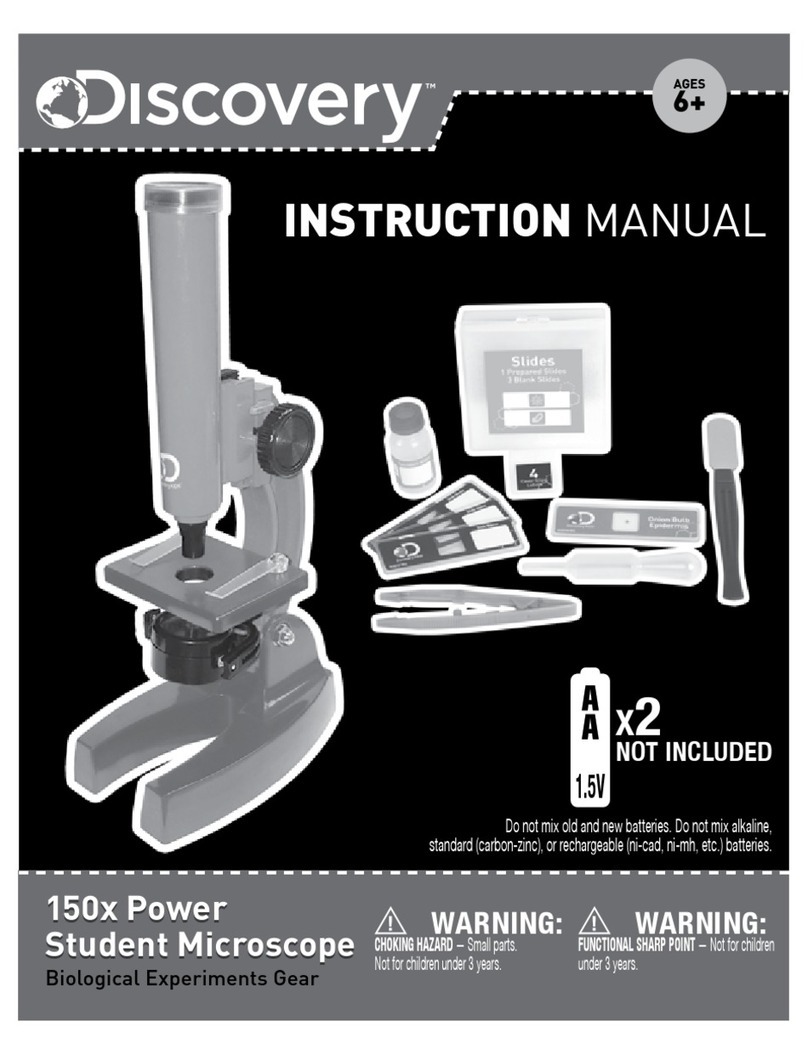
Discovery Telecom
Discovery Telecom 4400150 User manual

Discovery Telecom
Discovery Telecom TDK11 User manual
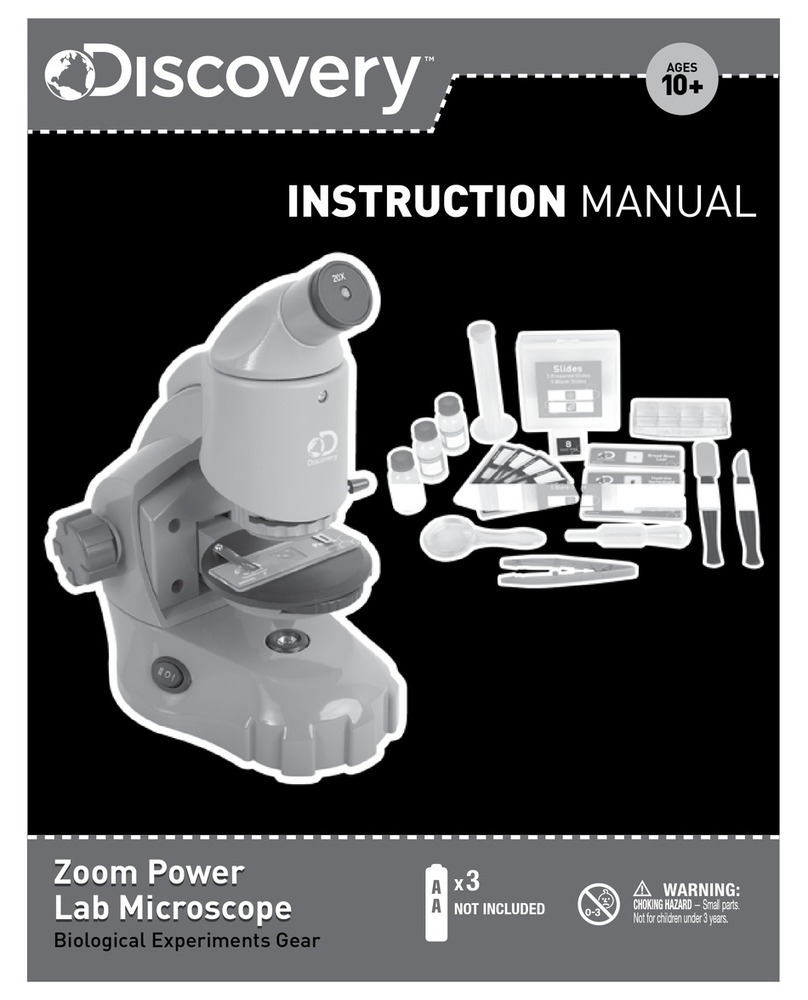
Discovery Telecom
Discovery Telecom Zoom Power Lab Microscope User manual
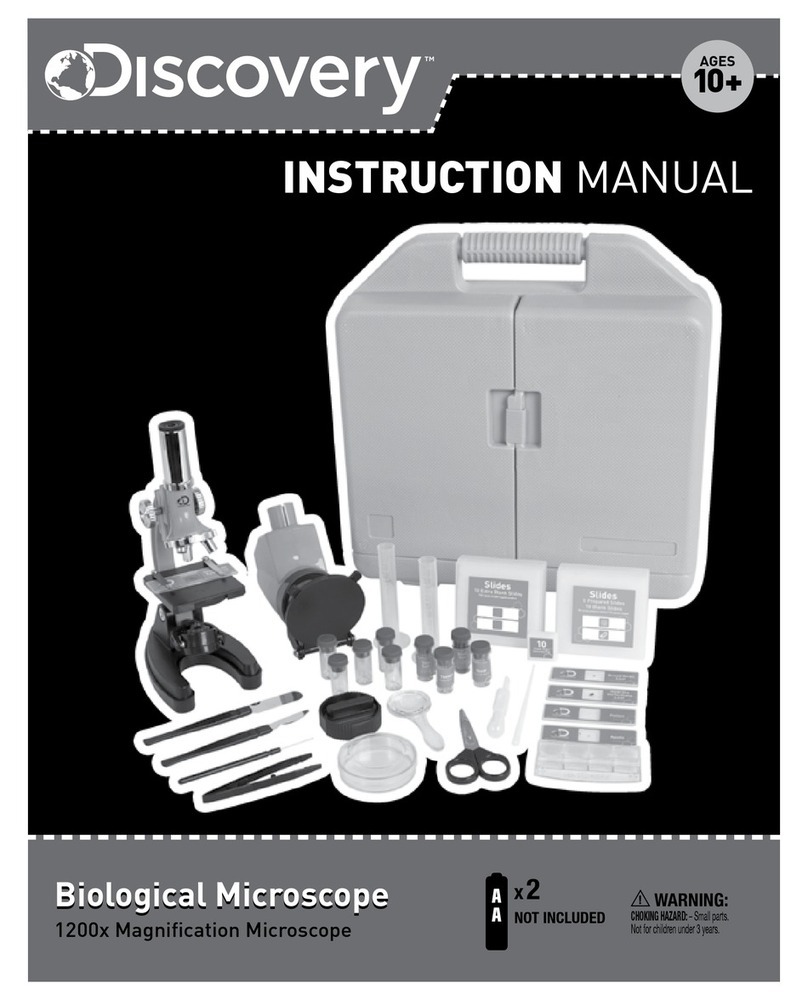
Discovery Telecom
Discovery Telecom Biological Microscope User manual
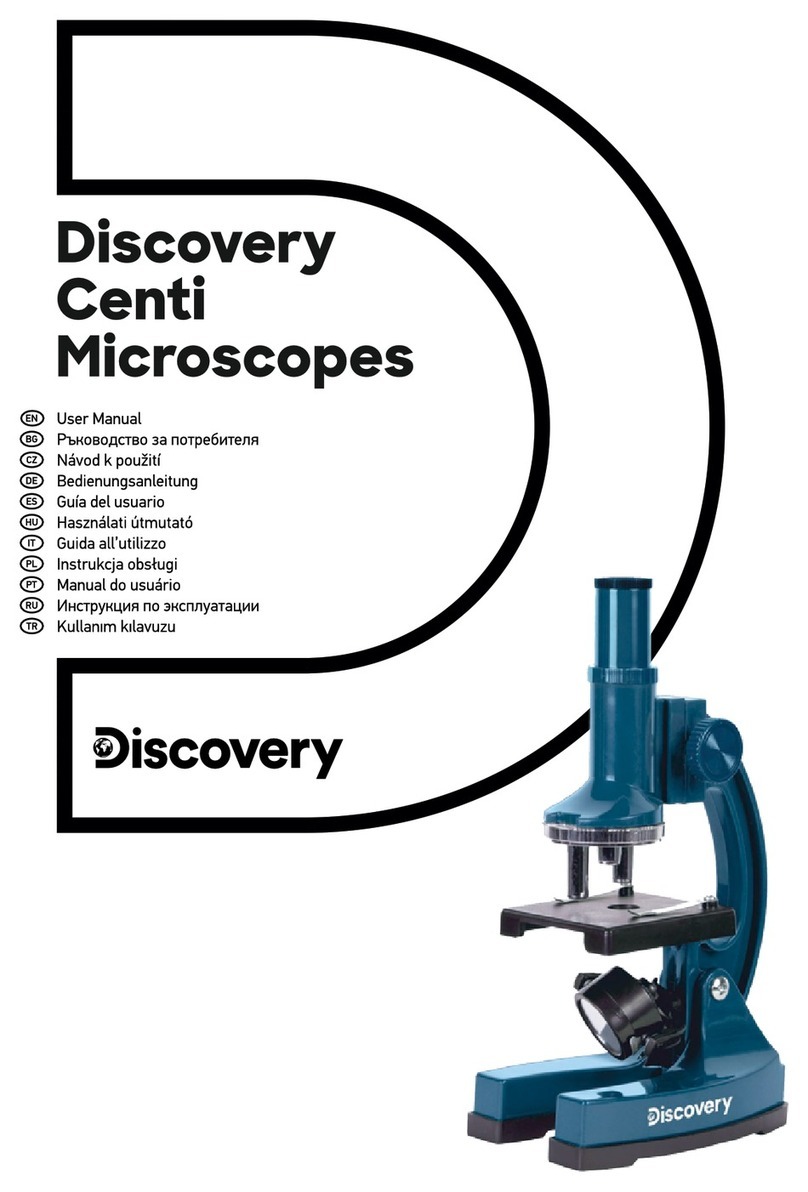
Discovery Telecom
Discovery Telecom Centi 01 User manual

Discovery Telecom
Discovery Telecom TDK26 User manual
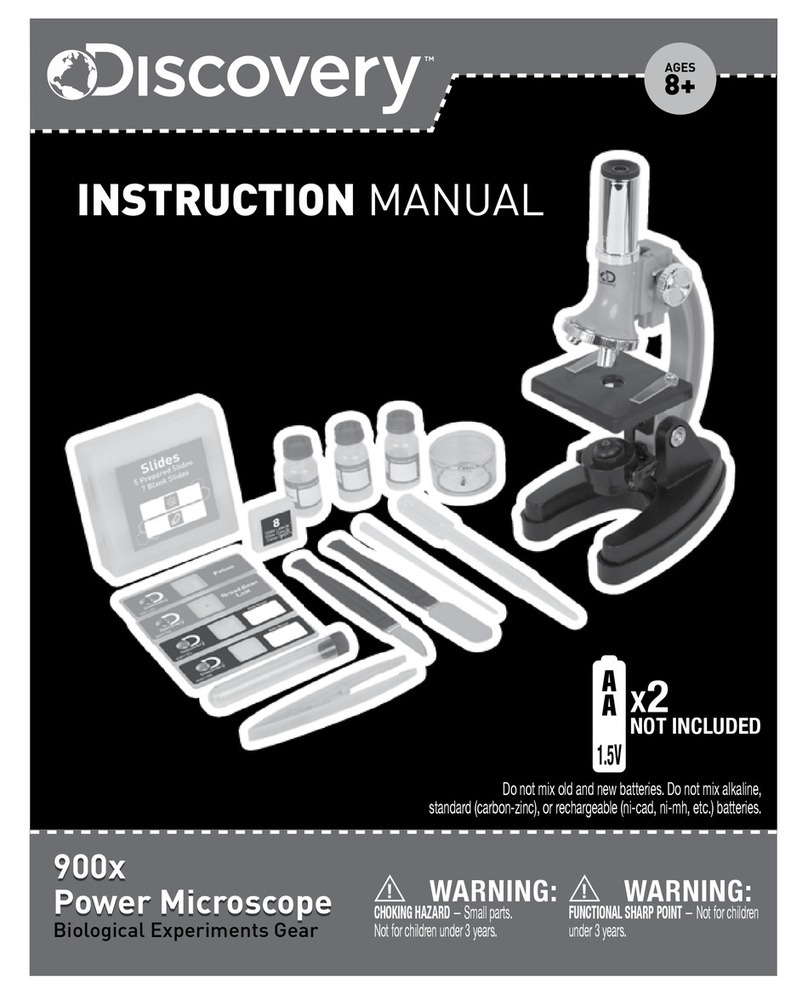
Discovery Telecom
Discovery Telecom 4450101 User manual
